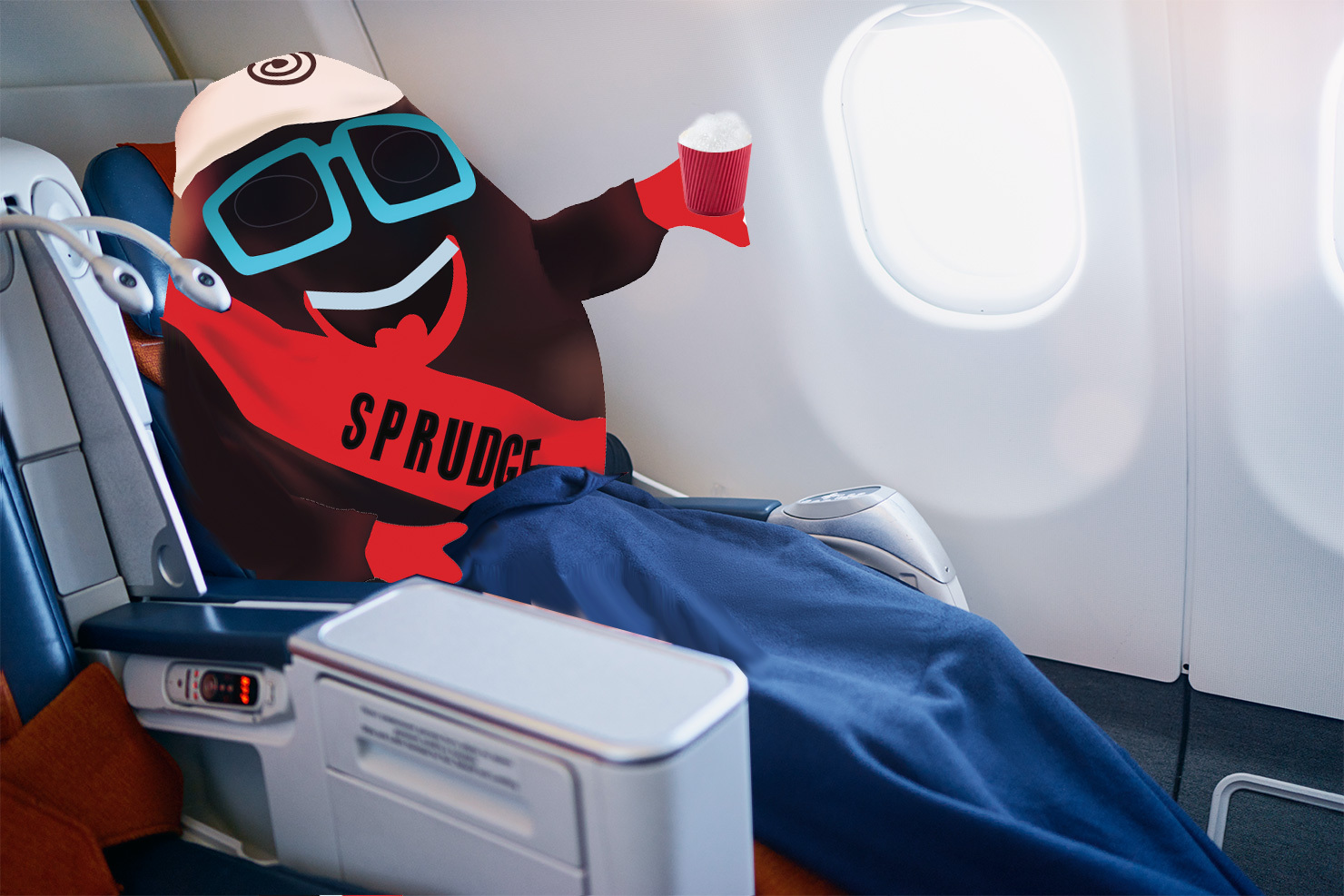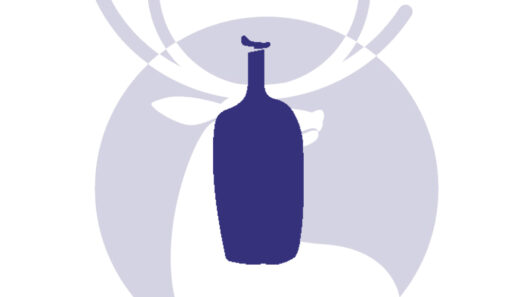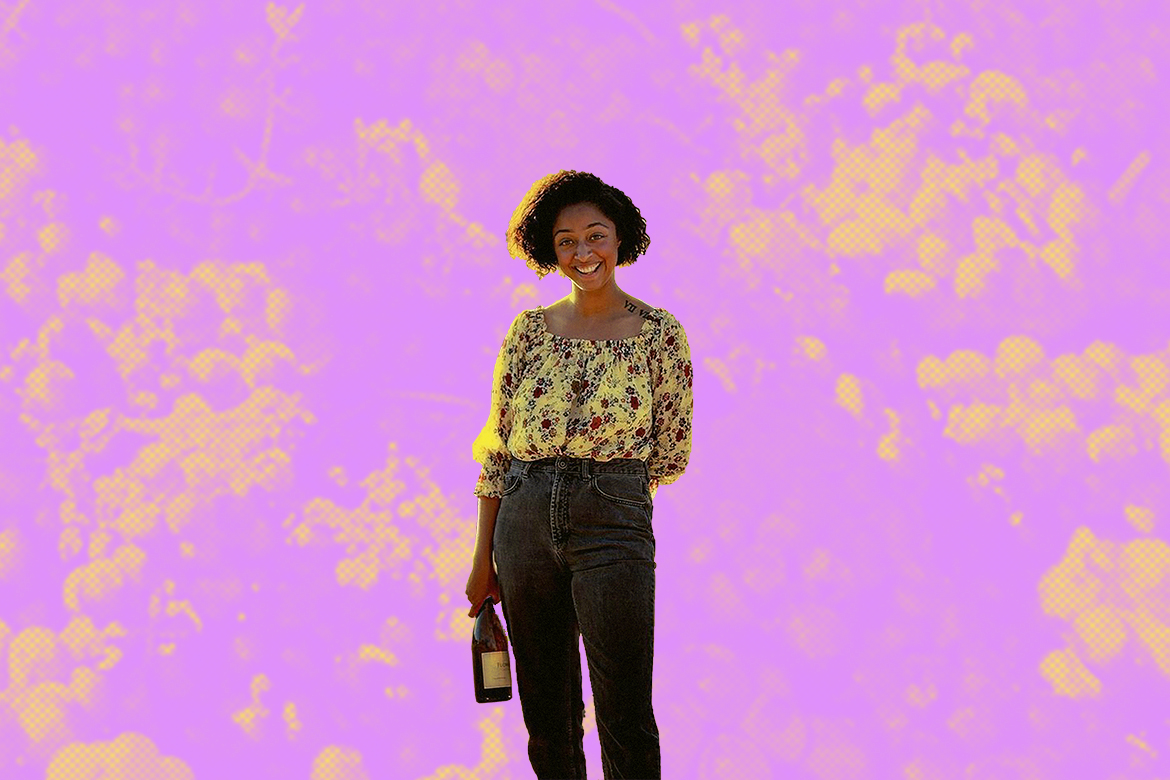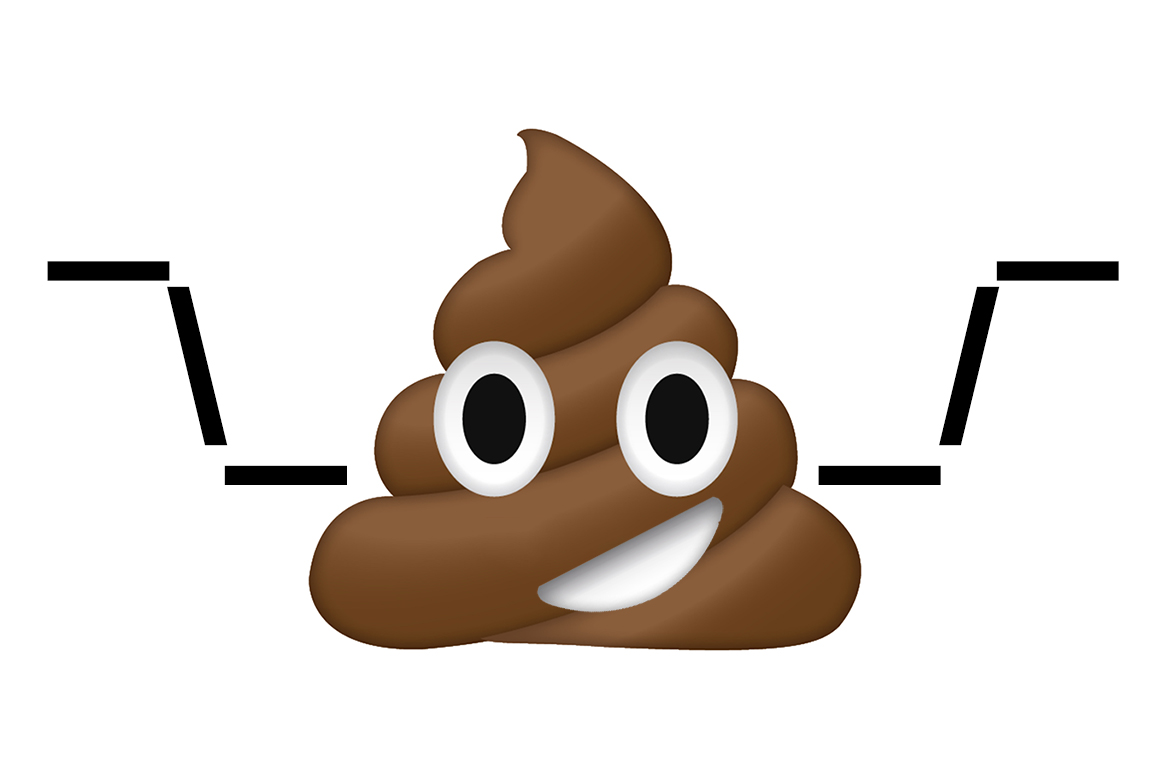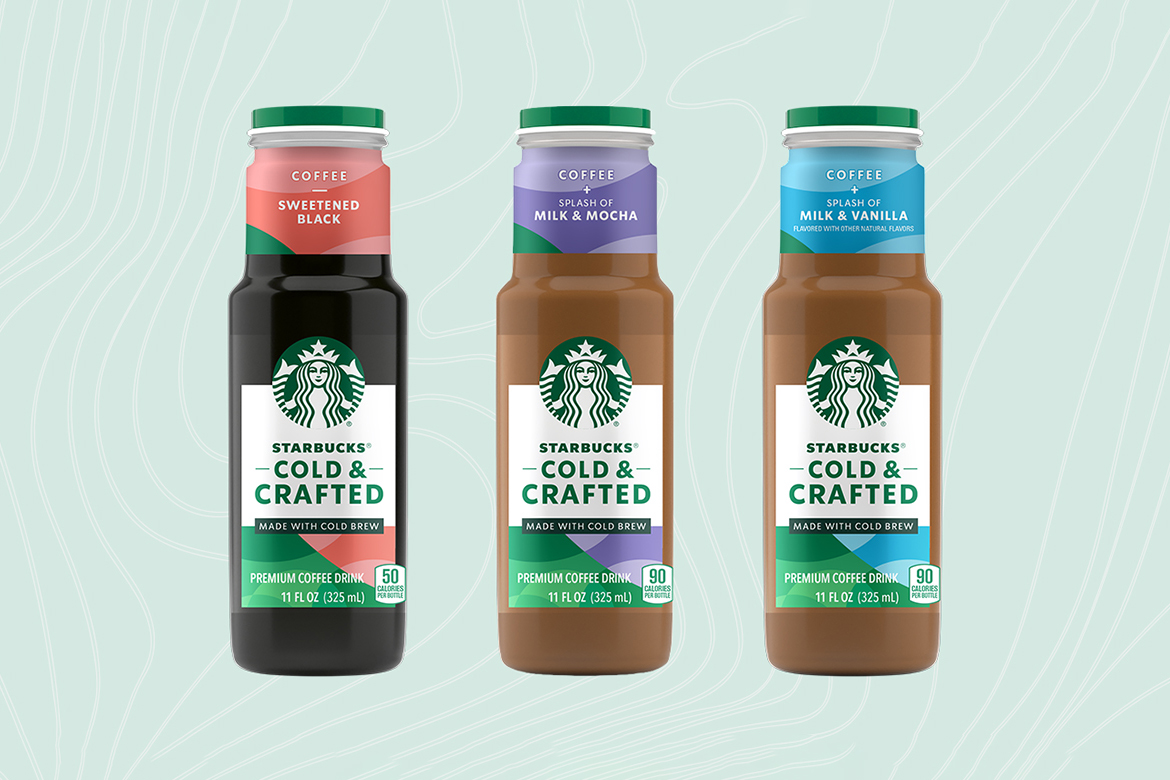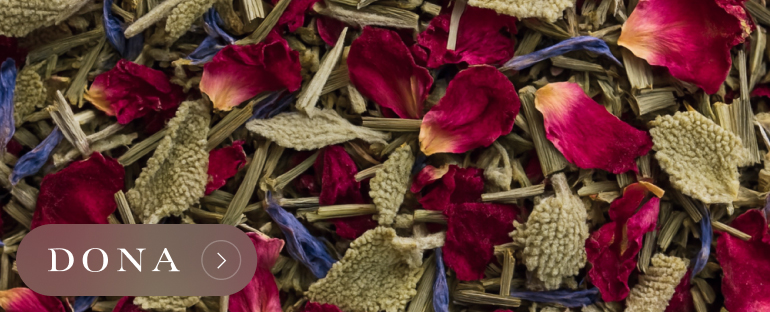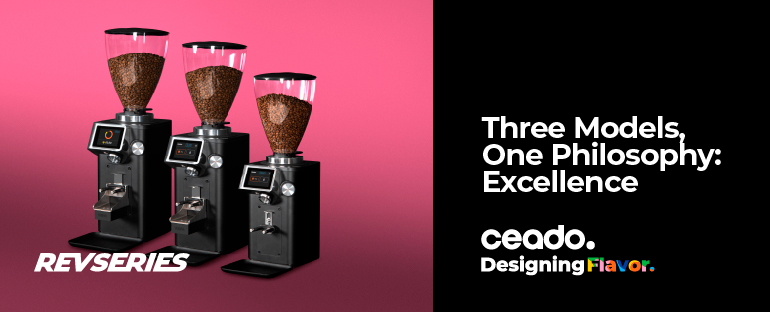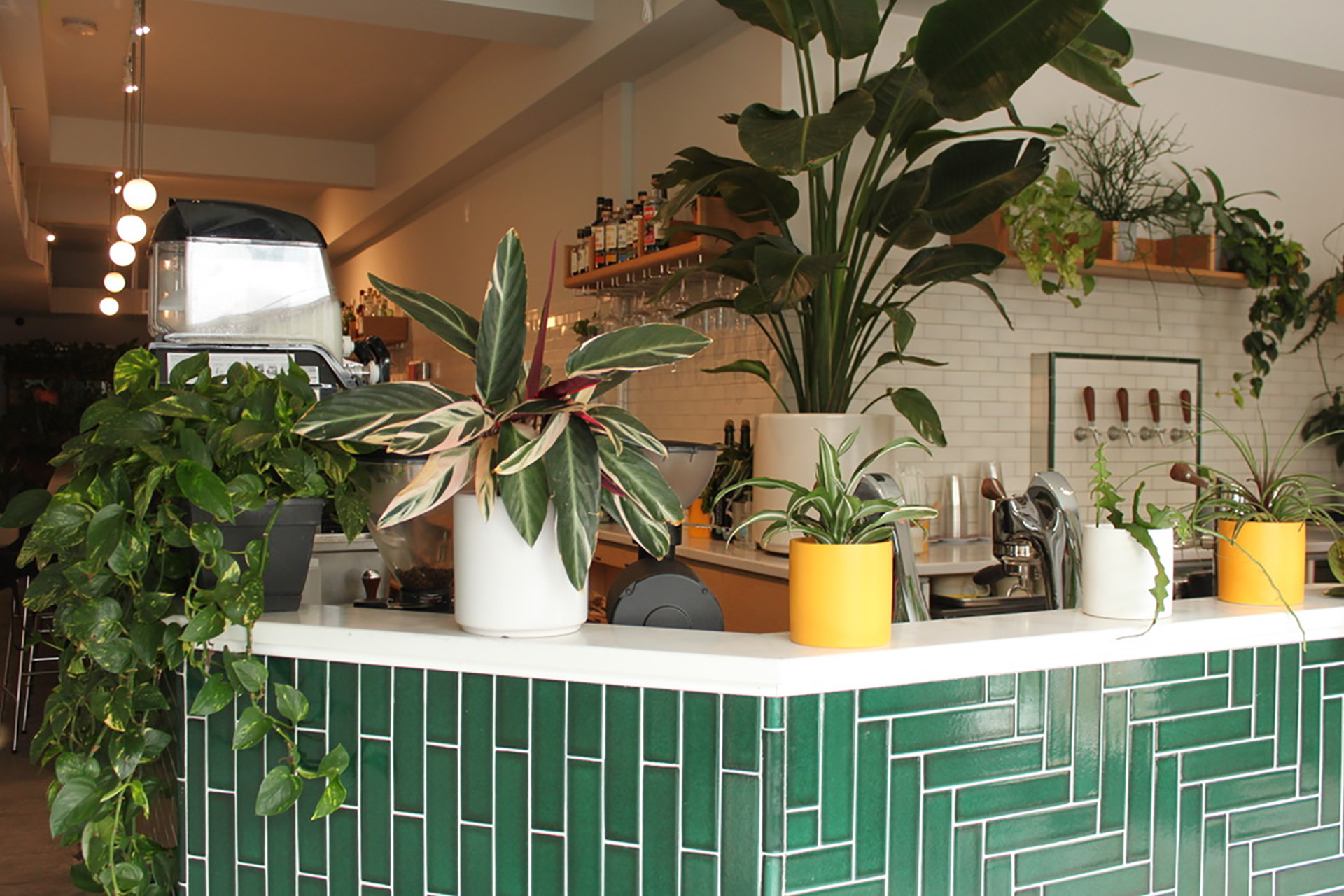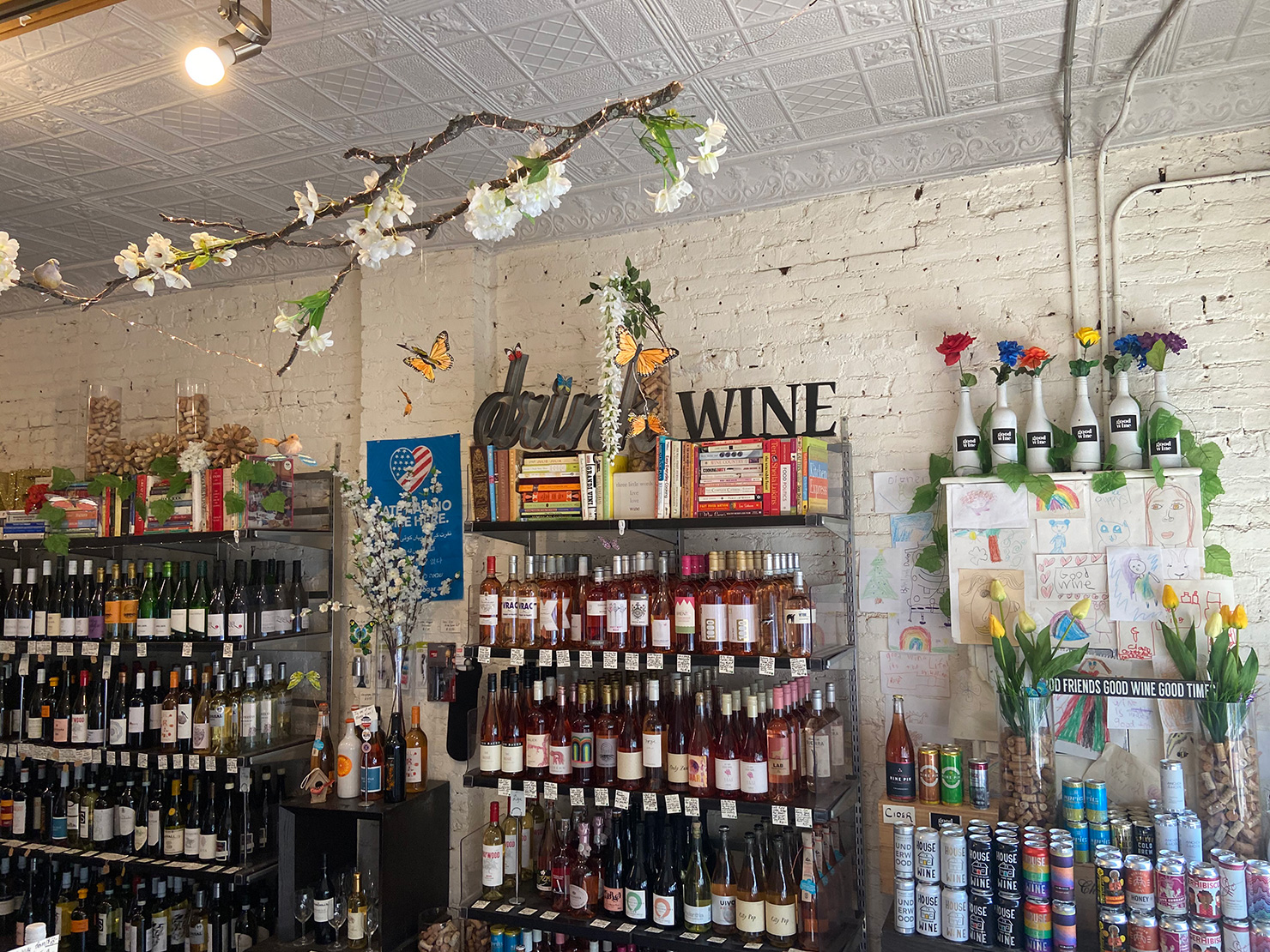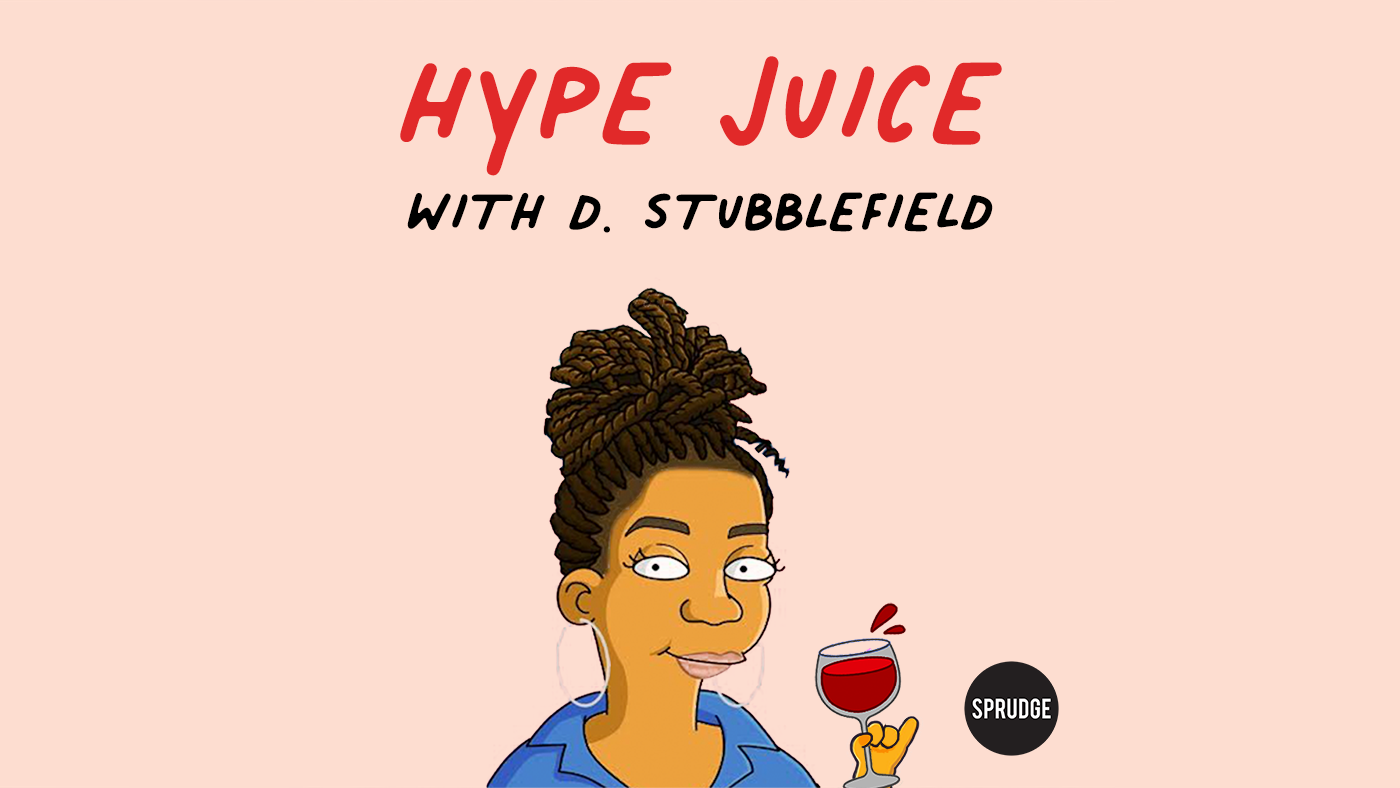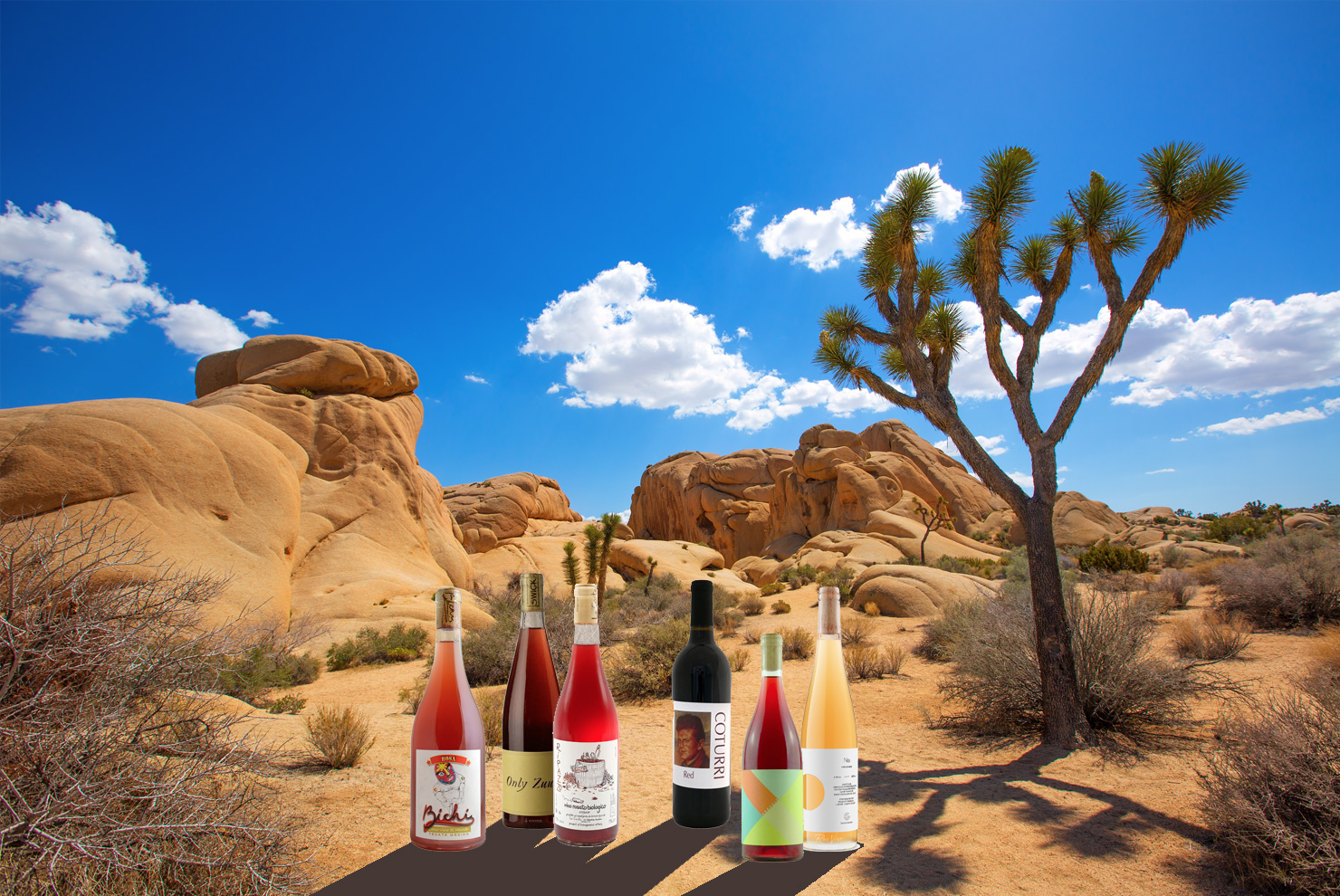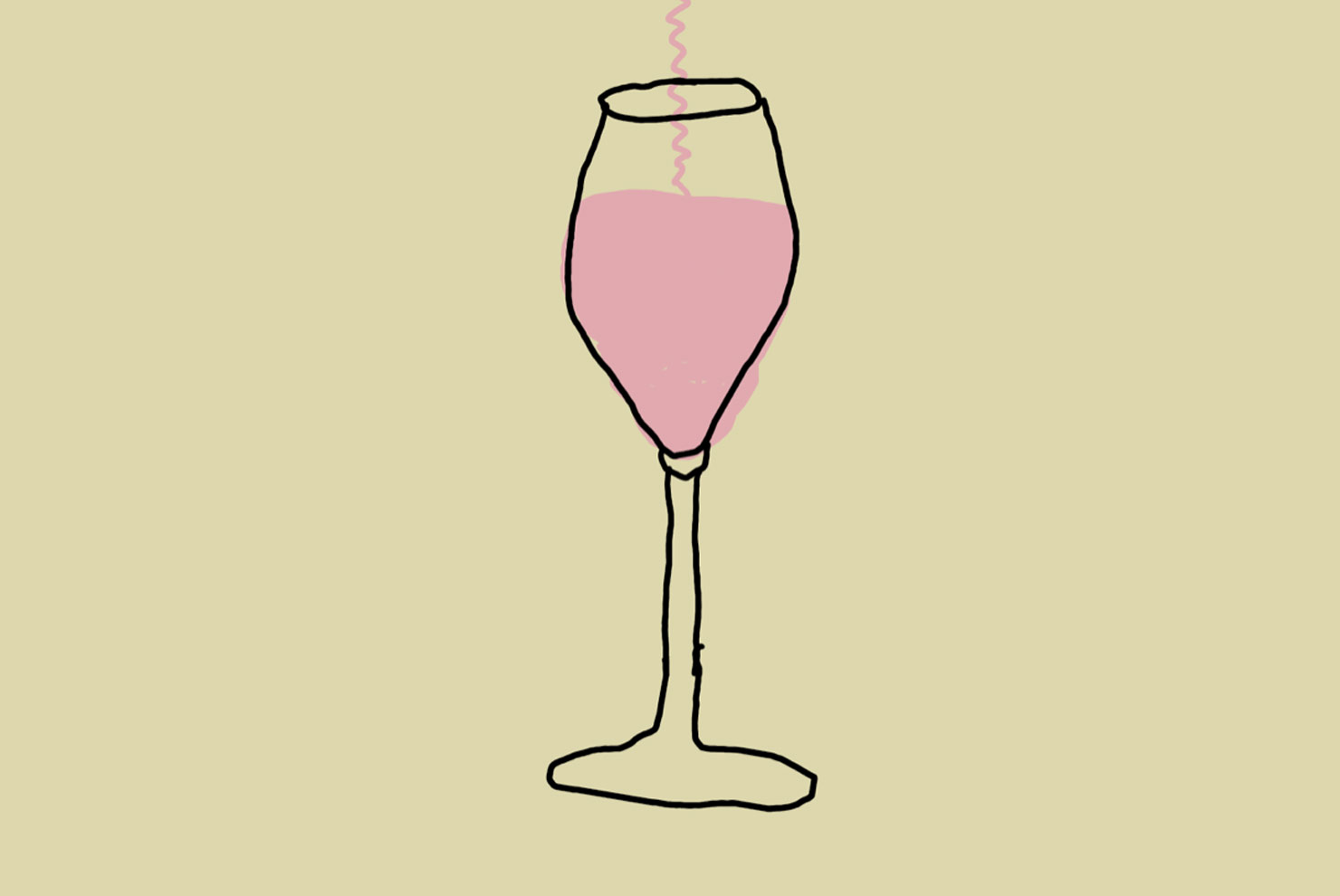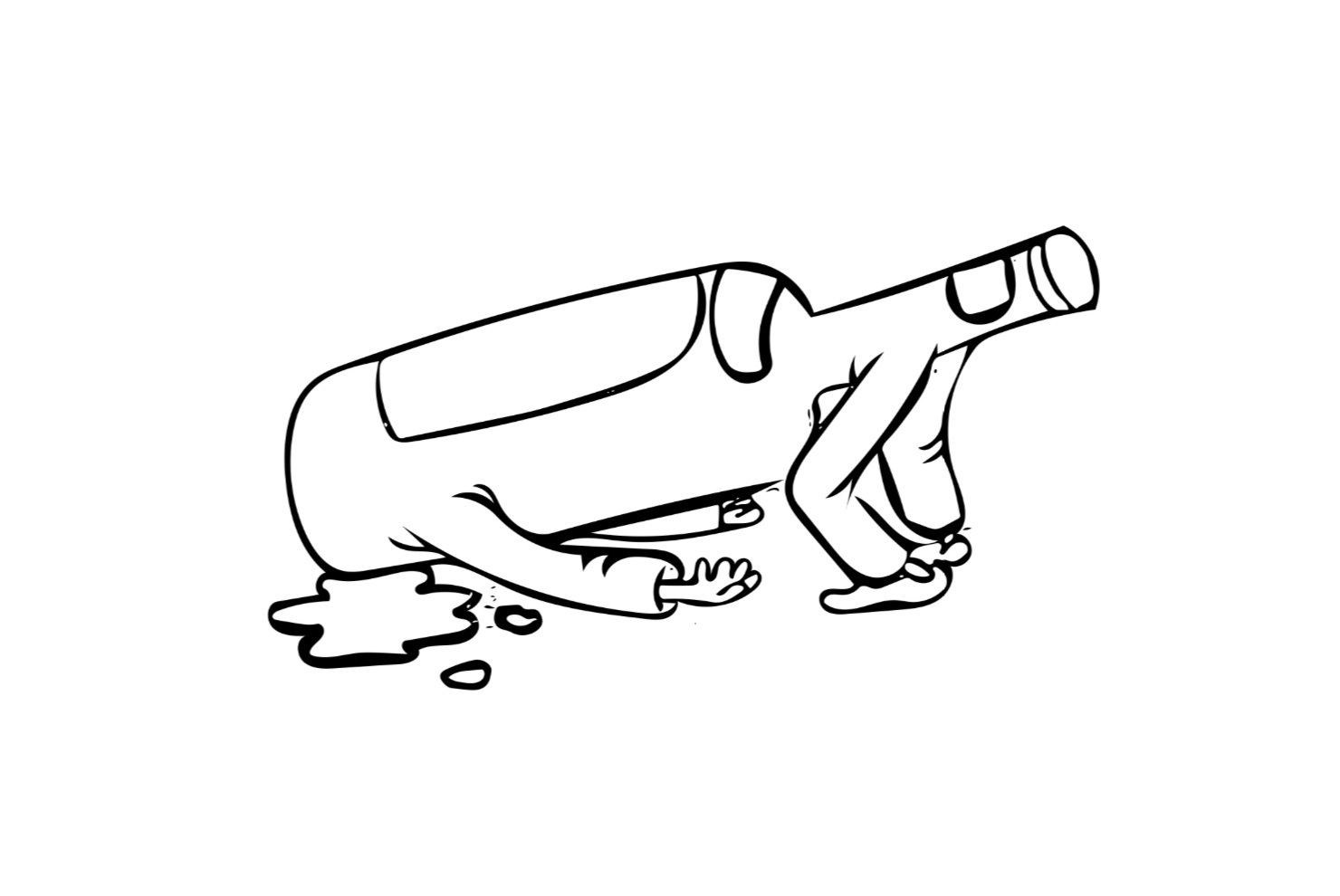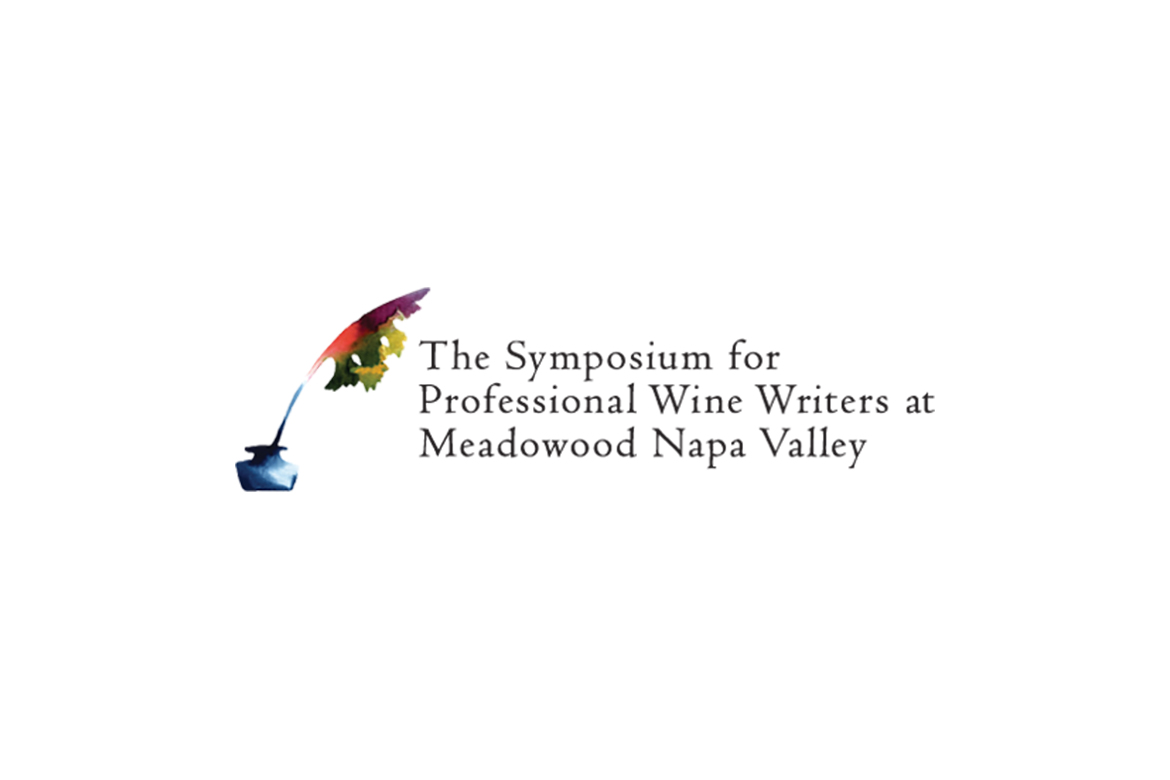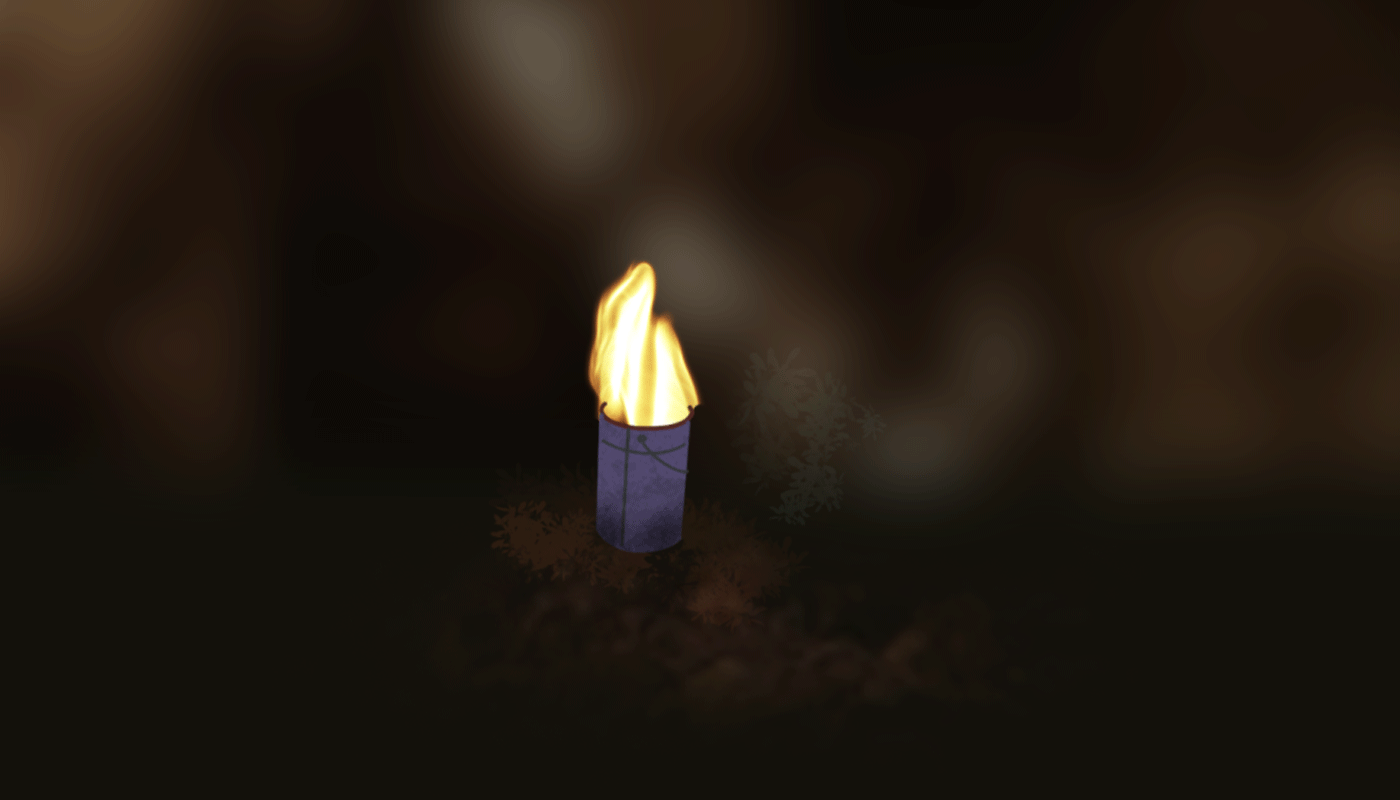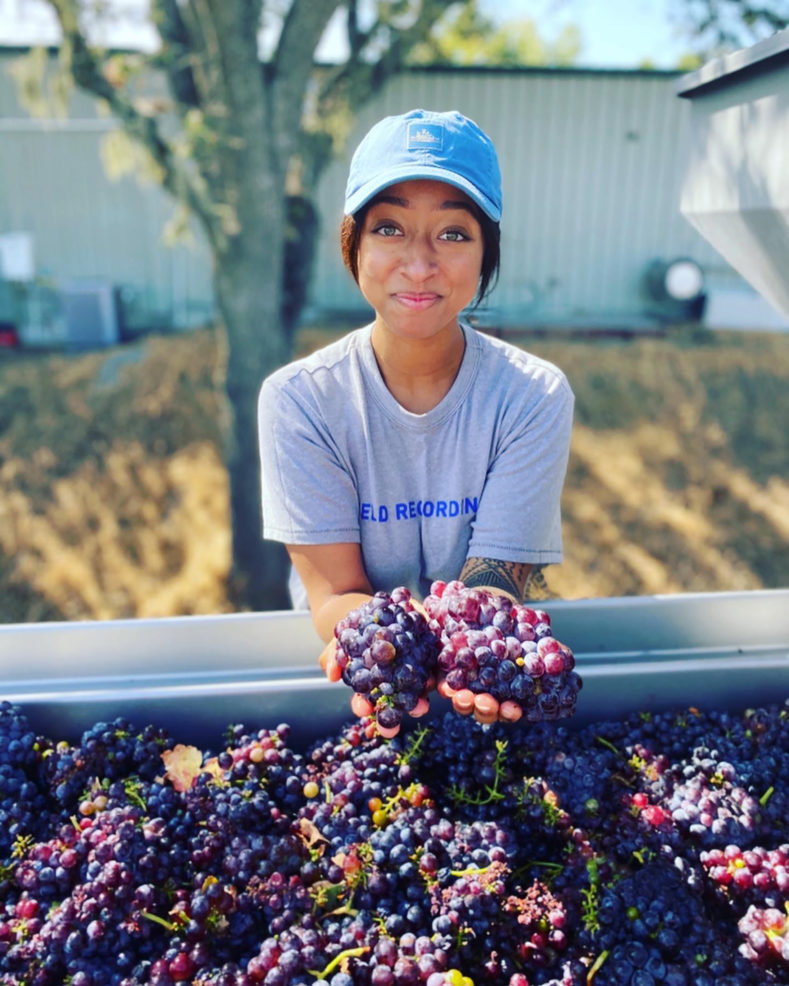
Simonne Mitchelson, 28, has a foot on each side of wine in California: the world of multimillion-case producers and of the 10-acre micro-vintners. As South Coast Estate Manager for Jackson Family Wines, the ninth-largest winery in the country, she’s charted her own path through the corporate structure of large-scale viticulture. And as a young winemaker living in Arroyo Grande, she’s launching her own label, Foreign National. In the beginning, she worked stints at Flowers in Sonoma and got her feet wet working harvests in New Zealand after starting her career in hospitality.
Over the last year, Mitchelson has emerged as one of wine’s most driven and lucid voices for diversity and equity in the business, driven by the belief that her point of view can, and should, be taken to heart by any size of wine operation. Last summer, as Black Lives Matter demonstrations initiated racial reckonings within what felt like every industry, Mitchelson was galvanized not just to speak out as Black woman in wine, but to act strategically.
In the spring, she reached out to her peer Justin Trabue of Lumen and Ancient Peaks Winery, who she’d only met once as the only other woman of color she had encountered in the Central Coast wine scene. They collaborated on an open letter that took the critical momentum of the moment and applied it to the specific issues within the community, after witnessing that the most action they’d seen a local winery take was posting a black square. Circulated to Central Coast wineries, Mitchelson and Trabue called attention to specific issues they’d witnessed as Black wine professionals, and directives to, in their words, “accelerate accessibility” within the industry. It was a direct, no-bullshit call to leverage the power of America’s $219 billion wine industry to not just say racism is bad, but to confront and correct the way it often manifests in the structure of the business. They wrote,
“The wine industry is one of great power in this country, but has always been out of reach for Black people and people of color. This is changing, albeit at a glacial pace, but moving nonetheless because we are making spaces for ourselves and demanding accessibility to an industry that historically has been associated with the white upper class.”
That letter, which you can read here, was pegged as a fundraiser for local Black-led organizations, and received more attention than either expected. A refrain that Mitchelson heard a lot from wineries that responded to their letter? “We would hire more Black professionals, there just aren’t any to hire.”
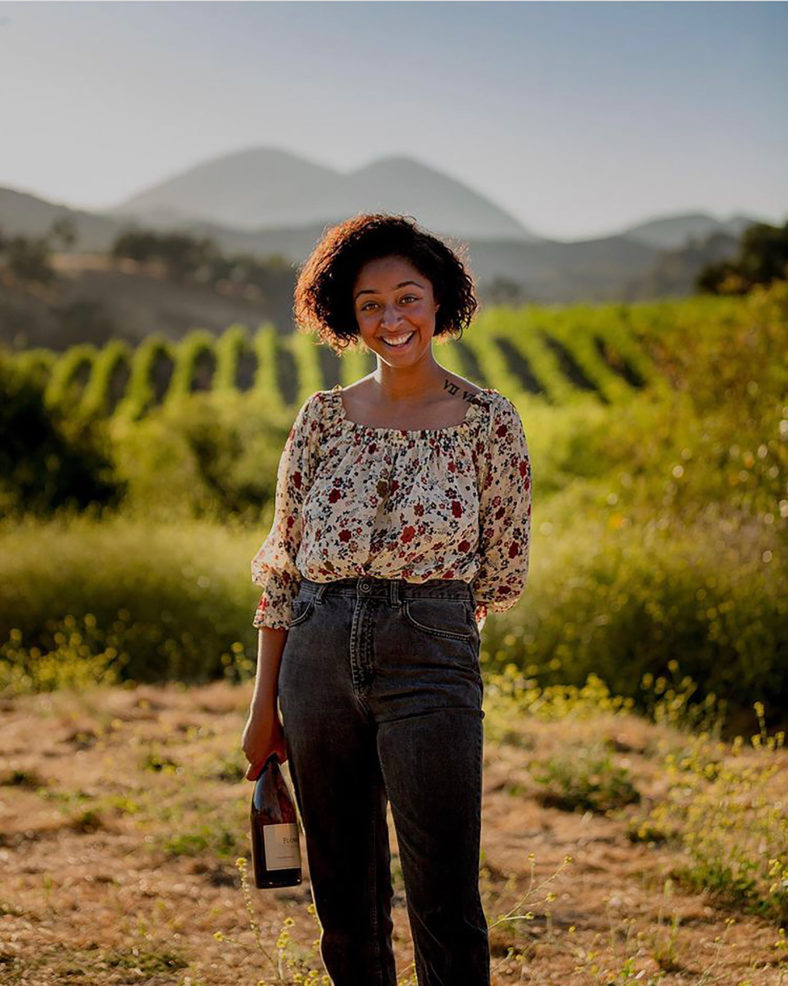
As frustrating as the sentiment was, it led to a lightbulb moment for Mitchelson and Trabue (who herself is a CalPoly alum): to increase diversity in wine, start at the root of where talent can sprout. In the summer of 2020, they launched a scholarship fund for BIPOC at CalPoly’s enology program, the biggest graduate of wine students in the country. And now, at the beginning of 2021, they helped launch a new nonprofit wine club venture called Natural Action, a quarterly allocation of natural wine from partners like Solminer, Scar of the Sea, Amplify Wines, and Good Boy Wine for its first shipment. They’re working with BIPOC artists to create unique label artwork, and while this first round directly funds the scholarship program, they plan to benefit various recipients who work “towards education, internships, and career support for the BIPOC community interested in exploring a career in the wine industry.”
Personally, I was interested by the way Mitchelson, Trabue, and partners were energetically pushing for long term, structural changes in wine, particularly after a painful, exhausting year for Black Americans. Mitchelson’s dedication to the craft and business, from agriculture through the corporate structure, really validates the premise that there are optimistic, creative solutions to improve an industry with so much value to share with those who had been excluded before. On a rare spare afternoon between tasting room duties and the Natural Action launch flurry, I talked with Mitchelson not only about her initiatives, but the specific nature of the wine industry and how to address racism and inequity within it. Read on for our conversation (which has been condensed for length and clarity) about the importance of mentorship, building retention, being Black in white rural regions, and how to really make long-term investments in people and in culture.
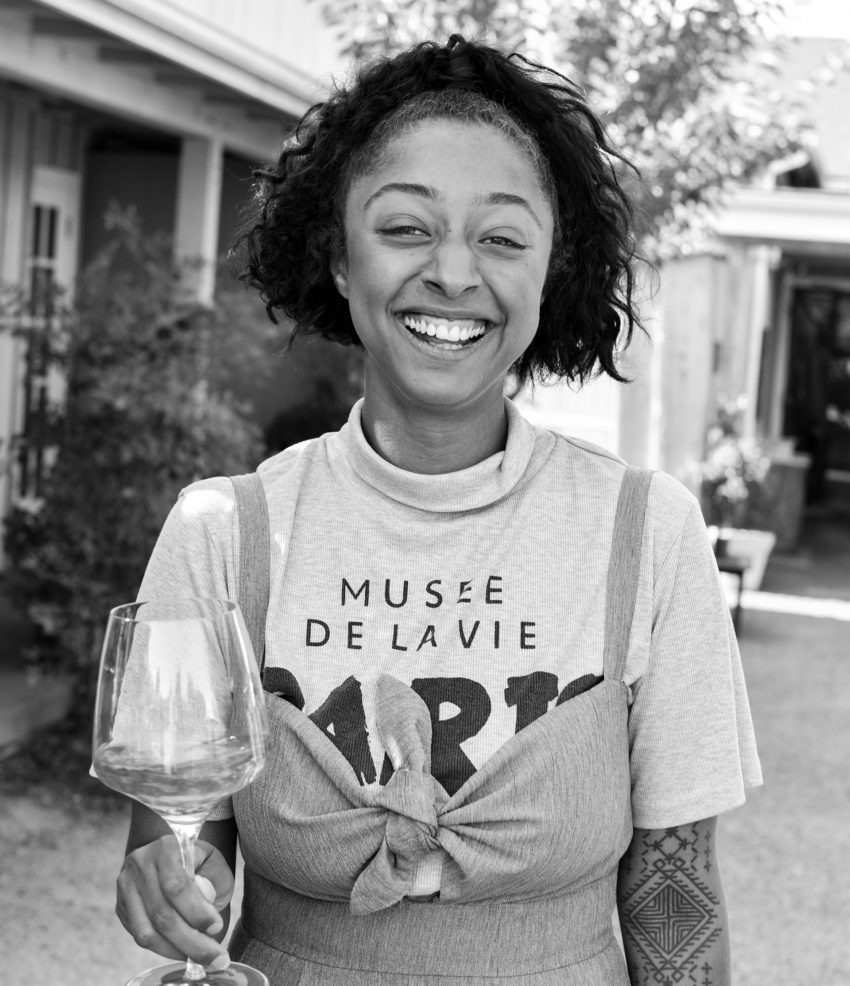
Tell me about your entry into the wine world. Was this like a dream you’ve had for a long time that you chased, or did you just kind of stumble into it?
I definitely have the stumble story. Well, I grew up in Michigan in an incredibly conservative West Michigan family; we immigrated to the United States at the end of 1993 from Durban, South Africa. When I turned 17, my dad moved my older sister, Tarryn, and I to New Zealand. My older sister went to Auckland University of Technology and we both started studying with the college. I got a part-time job working in a fine dining restaurant called Euro. I’d never worked in hospitality a day in my bloody life, and it was super high-paced. I came in at a pretty interesting time because it was the Rugby World Cup. So there were people from all over the world coming to see these rugby games, and we got to host a couple of rugby teams and it was just, like, absolute chaos and anarchy. People were drinking and I was freshly 18, and you can drink at 18 in New Zealand, so I was just like—oh my God, it’s like losing my mind. Very strange experience compared to what, like, I would have been doing in Grand Rapids, Michigan had I stayed. So yeah, that was just so thrilling, and I dropped out of college and started doing that full time.
Working in the restaurant, I basically moved up to management within three months. As part of our training, we had a lot of winemakers from specifically New Zealand and Australia come and do trainings with us on their brands. We had an extensive wine list; it was probably one of the best in the Viaduct, if not the best in the Viaduct, and we sold a shit ton of wine. So my exposure to good quality wine at the age of 18 was wild.
I was super lucky that the people that I worked with really saw that I was really enthusiastic to learn. Everyone around me wanted to learn too. A lot of what we did was wine matching and degustations. I got to work on the chef’s table eventually, and he heard me talk about wine to a few guests and did some cool pairings that I was really proud of. He sat me down at the end of that chef’s table and was like, “have you ever considered a career in wine?” And I was just like, “I don’t even know what that means.” Like, this is a career in wine to me. I didn’t really understand what it meant to be a somm at that point either. I was still super fresh in hospitality.
So I talked to one of our suppliers after I had that conversation who worked for Euro Vintage. He was like, “just reach out to someone and try your luck, like see if someone will take you on for a harvest.” So I did—we had a regular that came into the restaurant named Steve White, David Jackson was his GM. Steve owned Stony Ridge on Waiheke Island, which is an iconic winery in New Zealand. I just asked him. “I’ll work for free, I’m just trying to get some experience, I don’t really know what it means to do a harvest, but I want to learn production.” It was a really cool atmosphere to be a part of for my first harvest, everything was hands-on. It was just me, Martin, and his assistant winemaker Brian Duluth, who now has his own place in Jura, which is really cool. We did 20 tons at that harvest. They’re super small and he was the one who encouraged me to go to California. So I left New Zealand in 2016, and my first harvest was in Carneros making mostly Chardonnay and Pinot Noir. I got hired at Flowers for the next harvest—I call Flowers my aha wine. Working there was a complete dream, and that’s where I met my partner. So yeah, that kind of spurred my initial journey.
Sorry. That was the long version.
No, that’s a great version. I think for any piece where you’re really asking someone about what they do, especially as an example, it’s always interesting to know what were the signposts, or benchmarks, what kept you going? Because so often, the answer is mentorship. It seems like you had several mentors. I’ve totally had that sort of moment in my career, too, where there’s a job I didn’t even know what it was until someone told me that I’d be good for it. Like, how could you ever know?
Yeah, exactly. Obviously like this is the airy fairy version, everything sounds great and natural. But like, I had serious moments of questioning within like, what the fuck am I doing in Sonoma? I don’t know anyone here. And it’s a small-ass town. There’s no Black people here. I had experienced a decent amount of racism in Sonoma too, but I was very grateful to be so close to Oakland and Berkeley and San Francisco where there’s actually culture outside of wine. That’s probably the hardest part about living in the Central Coast now, because it’s like Sonoma, but it’s the whole fucking region. It’s difficult, and people don’t understand that it’s difficult.
As you started to go through the wine industry, from the hospitality to viticulture pipeline, what were your impressions of the industry as you moved through these spaces, particularly as you were maturing and growing up within this industry?
Well, I mean, being so naive to hospitality in general was a good and bad thing. I wasn’t jaded on the industry whatsoever. Literally everything was intoxicating to me. I was just like, this is so amazing. What is this culture like? What is this food? What is this? I had never had a steak before until I turned 19. Like, not just like a steak on a plate like that. That’s just not what my family did. I mean, we’re African, we put it with a bunch of spices and potatoes and rice and it cooks for hours and then we all eat it on a Sunday afternoon. Like, it’s not like honoring this one thing that is grass-fed, or has been grain-fed for 130 days and dry-aged. It was just so bizarre to see it that way. I gained a lot of respect for the industry through the restaurant that I worked in.
Hospitality also has an incredibly toxic culture too. Being exposed to that when I was a lot younger, I think allowed me to, I guess, mature out of it in a way. But I think that’s also what led me to want to pursue production a little bit more was doing my five years in these restaurants, getting to like travel and party and do 20-year old things. Then I actually started to think, what do I actually want my career to be? I was lucky that I narrowed in on wine that I had these people shaping me to be like, you actually have an interest in this. Maybe you should take it seriously. You know, like, try making something of yourself, Simonne.
I was super fortunate to just the people that I’ve met along the way. I never really thought of them as mentors until being outside of that space. Without them—any of them, even the people who I wanted to kick in the throat—they helped me so much to build and figure out what I want to do. I still don’t know exactly what I want to do. But now, like it’s led me to here and being able to for one, have a job where I can actually affect change outside of this industry and have an environmental impact. This has become fulfilling now. It’s not just wine. Because when I lived in Sonoma, that was a large part of it too— I was super alone. I was in a place where I didn’t know anyone and I was just like, why am I just making wine? What is this doing for me? This means nothing.
Last year gave me more purpose than, I mean, the past 10 years. Writing that open letter, it started as a fundraiser. I reached out to Justin Trabue and was just like, Hey, I don’t know any other woman of color in the Central Coast. I know you don’t know me, but do you want to work on this with me? Because I need to do something, and I don’t know what else to do. And she was like, yeah, absolutely cool. Let’s do it. Let’s raise a billion dollars. Justin is very enthusiastic! I was like, let’s start with a thousand. That’s basically what turned into the open letter. It was like: you need to reevaluate because I’ve not seen one winery do anything besides post black square. You think that this conversation is just going to pass. We need to see it here because we support your businesses. It’s like a kick in the teeth to see that. You don’t support us. Granted, in the Central Coast, the Black population is under 5% [ed note: 2% in San Luis Obispo County]. So it’s just difficult. It was anger, frustration, and feeling overwhelmed in a space that was predominantly white and not having anyone else to turn to. Reaching out to the only other woman of color that I knew and being like, help, like I know you’re probably feeling the same things that I’m feeling—what do we do?
I have so many thoughts. When I read articles highlighting diversity efforts in wine, it feels like most of them come from the hospitality side, just like how you came into it. It comes from urban centers. There’s typically a higher rate of diversity in a city where there’s, like, a cool wine bar. The access to exposure to wine is a $30 bottle or a night out. I see more opportunities for sustainable careers into wine coming from the hospitality side, simply because of that.
When you think about, just like you’re saying, how few Black people are in the Central Coast…that’s so many agricultural regions in the West where wine is grown. I think about how to even begin that in the vineyard, how to provide equity opportunities and diversify viticulture, but sincerely wonder: would any person of color want to work and live here? When you consider the viticulture and the agricultural side, do you feel like it’s like a more challenging place to bring people in?
A hundred percent. I spoke to a few wineries in Paso who were just like, well, there’s no pool to hire anyone here. I was like, okay, well, we are in California for one. We have the biggest enology and viticulture program in the country, here in San Luis Obispo. Why not use the university’s resources? Their recruitment efforts happen in Sacramento, in San Francisco, in Los Angeles. A majority of the students from Cal Poly are coming from the Central Valley. If they can pay attention to the high-end high schools there and throughout this state, then their recruitment efforts can change.
It’s hard to have this conversation too because it’s what a lot of the wineries have said here: there’s no Black people to hire. Okay—you’ve hired people from outside of the Central Coast before. You just need to get a little more creative and you’re going to have to look outside California, too. That is why I leaned into Cal Poly because although it’s a CSU and universities I’m coming to find out are a little bit more bureaucratic (shocker), they have incredible amounts of resources. For this effort to be real, It just made sense. Cal Poly graduates the most enology and viticulture students in the country. After speaking to a wine lecturer there who is brilliant, Adrian Ferrara, she was super gung-ho on the idea for the scholarship program. I basically wrote it like a business plan, and it was like: mission, community impact, university impact. This university needs to do more for diversity too, because it has a very bad history with racism on campus. That makes sense, because this area is over 80% white. I’ve heard horror stories from kids on campus, mostly alumni who are still in the community, and they formed the Cal Poly Black Alumni with chapters in Los Angeles, San Francisco, Sacramento, and throughout the country. Tapping into those people and being like, Hi, like this scholarship program is available, there’s full rides. How do we get out the word? I’ve never done anything like this before, so I’m really using their expertise. Being put in contact with the right people who are in lower-income areas, but also just paying attention to schools that are predominantly Black—that’s massive, so that they even have Cal Poly on their radars. That’s how you get to students, even if it’s in the back of their minds. They’ve heard the name, so they know there’s an opportunity and that will grow as our visibility grows in these places.
So it’s kind of talking people out of their own restrictions. You have to think long-term because this is a long-term investment. We’re not going to have, like, a hundred students apply for this scholarship. The first year we will probably maybe have three or four. Currently in the enology and viticulture program, there was one Black student. When Justin was there, there were two Black students. We have to start somewhere, and this is where we start.
Yeah. Well, there’s like an analog to that in wine. As a literal product, it’s something that takes seven to 10 years of minimum of investment to actually get the product you’re trying to make, to go from planting vines to having a bottle you’re ready to sell. There already is a paradigm of long-term investment inherent to winemaking. I also read that as a real double-edged sword, because on a really practical level that ups the barrier for entry to, like, millionaires.
No, but actually. A lot of these people have family money, and this is like their parent’s wineries that they’re just taking over.
Absolutely. Then on the other side, I would like to believe that there’s an understanding that if you’re going to make an investment in your industry and in your culture, it’s something that does take time. What I’m getting, from how you’re talking about utilizing Cal Poly’s recruitment team as an example, is that there’s a different way to think about gatekeeping, and how maybe even unconscious gatekeeping can keep furthering racism and inequities in industries that wouldn’t consider themselves racist.
When you sent out the letter, a bunch of wineries were like, oh my God, I had no idea that this is a problem, but it takes a reframing for them to think about it. It’s not like racism manifests singularly as a single evil white person at the gate being like, you can’t come in!!! It’s entire cascading levels of access, more than anything, and I mean down to even the exposure to the idea that wine could be a sustainable career. Even just planting the seeds of those ideas outside of the realm of monied, white, generational wealth, et cetera, is the work.
They think on such an individual level. It’s very hard to get people outside of their perspectives. We’re thinking of it as a community issue, but for your own self, you’re like, well, we’re not racist. We know that other wineries in this area aren’t racist. It’s very much, this is our family, this land was inherited, you know, this is tradition. But it’s like you just said too, you’ve had access for generations and here there’s still people who can trace back their land to the Homestead Act. That 40 acres of land that you’re on, that you’re so proud of, that’s family, you know how you got that, right? But that is a hard conversation. I get the defensiveness. I understand it. This is your home. This is where you and your family have lived for your entire life. You feel like it’s a fight or flight thing. Someone’s coming in, like attacking something that you love…which, I hate that my first instinct is to rationalize that kind of behavior, but also, me being inflammatory and getting angry would not have done anything.
When you’re thinking on this macro level of systematically getting more BIPOC into wine—do you get distance or skepticism by way of, why would I want to join this industry? Why would I want to go live in the rural West where, you know, 80% of landowners are white?
Yeah, that’s something that I’ve talked about with a couple of people who graduated from CalPoly. They came here and saw the campus, beautiful and right next to the beach. They noticed obviously that this was a mostly white area. But they wanted to come here for the school, and felt like this could all belong to them. At the end of the day, this is an opportunity. We have to take these spaces. It is going to be uncomfortable and hard, but it’s us reclaiming this space.
It’s both. It’s talking to a lot of white winery owners around here and being like, okay, there’s not a lot of Black people here to hire, but you can do X, Y, and Z. Then it’s and then talking to BIPOC like, you know, like this is an incredibly beautiful place to live, and there is opportunity here. The Central Coast is not Napa and Sonoma; we are still up and coming. There’s a lot of nuance in this area too, for winemaking. If you want to be a part of that, that is open to you. You do have opportunity. Is it going to be a little uncomfortable? Sure. But you know what it’s like to navigate a white space because I guarantee you’ve had to do it before.
It’s going to be frustrating and it’s not going to end in our lifetime. This last year was such a catalyst in so many ways. We’re in here for the long term. So maybe I still won’t see it as colorful as I would’ve liked to in our generation, but we can see that it’s happening and it’s moving forward. So I’m going to take a little hope in that.
That all relates to this ongoing discussion in agriculture, well, really anywhere, about the nuts and bolts of, what does equity mean? The way it’s been described to me that’s so helpful, is that there’s access, and then there’s tenure. A winery could say, of course we have anti-discriminatory hiring practices in our bylaws, or whatever, but that’s not necessarily the same as creating pathways to tenure. That’s not the same as creating an environment or the infrastructure that retains people of color within very white industries.
When you think about the main barriers for racial and economic equity in the wine industry, what do you think are the keys for getting to that point of long term tenure? I guess the more corporate word would be, like, retention.
Yeah. I’ve heard that a lot over the past two months. Well, there has to be opportunity. I feel like wineries that I’ve talked to that are having a hard time just saying: “this position is open to specifically someone of color.” I have talked to a couple of wineries up north who want to offer a two year internship so a person of color can work in whatever sector that they want to. Maybe they do a harvest, but then move into working with marketing and brand, and then move into event planning or accounting, whatever backend stuff. That’s letting someone see all facets of the industry and then move forward from there. For a college graduate, that kind of opportunity is invaluable—but also, offer it up to people like me who don’t have a degree, for people who just have that drive and ambition. At least like if you provide a good atmosphere for people to feel safe, to feel heard, you’re giving them the tools that they need to succeed. I think the most important thing to me in my own role was feeling secure that someone has my back, and not just being thrown into the deep end as a diversity hire to check a box.
In this industry, we know what we’re walking into. We know that it’s going to be uncomfortable and that I will, especially if I go to an industry tasting here, probably be the only Black person there. I know that, and I’m still going in, because I want to learn and I want to be there, and there is opportunity for me here that I can see. I want other people to feel that way too.
Let’s talk about Natural Action Wine Club. I’m very curious about how it actually works, and where you want to take it.
The first person to put all of us into contact was Eric Bach, who owns Good Boy Wines in LA. Eric was in contact with Cam and Marlen Porter, who own Amplify Wines in Santa Maria, here in the Central Coast. They started talking about basically what we’re talking about: how do we involve natural wine in the current conversation of equity? So Cam and Mar reached out to Teron Stevenson, who owns The Friend (a bar in Silverlake, Los Angeles) and Khalil Kinsey, who is the co-founder of Westside Winos in Los Angeles. His family owns the Kinsey Collection, which is the largest African-American art collection in North America. They all started conversing. Cam is actually the one who reached out to Justin, who is the assistant winemaker at Lumen and the hospitality supervisor at Ancient Peaks—Cam and Mar had been sent our open letter. The guys set up a Zoom call, and we were just throwing around ideas. At the time I was managing a club, and when I was GM, I was also wine club manager. So I asked them if they’d consider an allocation so we’re just exclusively a club, an online retailer, and all the proceeds we could donate. We contacted a lawyer who specifically works with wineries. He gave us a rundown of what a non-profit could look like and how we could operate.
We started talking about having our labels be created by Black artists around the country, and being able to pay them through the allocation as well, so that they’re actually receiving money for their work. We don’t want donations from Black creatives. We need to pay Black people. We don’t get a dime. None of us are getting any kind of profit from this. It’s literally all the proceeds will go towards paying the wineries, paying the artists and the organizations that we choose to work with.
So I told them about the scholarship program, like this could be our first allocation, and we could have it routinely. So we donate maybe to four places a year, and so that it can live on, we’re always donating to the scholarship program.
After we went public, the response has been wild. We started getting a lot of inquiry from industries outside of wine. Like, a film company got in contact with us to collaborate. I can’t tell you how refreshing it is to work with people who are so on the same page. Just like down to everything that we believe in. And then having it be wine too, that is super unique. It’s the first time I’ve ever found it working in this industry.
As you were brainstorming how to even use the energy of the racial reckoning in the summer to do something in wine, what came up for you? Like, when you’re sitting down and talking with friends in the wine industry, are you ever just like, if only so-and-so would just do this, this would work better?
I think a really hard thing for wineries—I’m going to speak specifically to the Central Coast, but it can be a generalization—is to really reevaluate your company culture. It sounds so simple, but bloody hell. It’s been really difficult for people to come to terms with, and a place I’m thinking of specifically, when I brought it up to them that I know every person of color that has worked for you and they’ve all left within a year…why do you think that is? Did you give them an exit interview? Have you talked about it with other management? Why do you think it is such a problem for you to retain people of color? They were not impressed; obviously, again, like, it feels like I’m attacking you. I wish that that people’s initial reaction wouldn’t automatically be defense. It all sounds simple and it sounds easy, but it is also a very personal thing to businesses. Having to reevaluate like that, I know it’s difficult. This is a conversation that we’re having right now, if we’re talking about creating equity, and I just wish more people were open to having that conversation. It has to start like within, you have to do some introspection within your company, too.
To recognize that the only people of color that work for you are probably the farmworkers in the vineyard that you hire only seasonally—okay. How do you change that? And if you can’t figure it out, because all of your team looks the same in management, maybe you should look for some outside help and hire a consultant.
I’m sidebarring here, but what you’re talking about with defensiveness is I think related to this enduring notion of wine being a family business, and the downside of that. On one hand, literally, people are inheriting money and land from their families. But there’s also this romanticized notion of the industry and how everyone’s like family, you know? That might feel warm and fuzzy for the people that look like they all could be related or whatever, or to people who grew up around it. So when you do, you know, confront this, it feels to them like this personal attack to everything they’ve ever been and known. And that just adds an unnecessarily layer of difficulty and of “taking it personally” that then makes life harder for someone like you, who’s simply pointing out the realities of the business and putting the work in to change things. Anyway.
When did you launch the scholarship fund in earnest?
We had a day that we could go public, that was in October 2020. But we had been talking about it for months, and fundraising specifically. And Natural Action, we had that first Zoom at the end of June, I believe.
I love these details because it’s cool to show how fast you’ve gotten these three large projects done.
I think it was all really good timing though, too. It was hard to process everything. It’s weird that like, this was just my way of processing all the shit that happened last year. I was like, I can’t just sit here and cry and be mad about where I live and keep telling my boyfriend that I’m miserable. It needed to be action. It all just happened: because of the pandemic and working from home and having this time to actually sit in my living room, I just had the time to work on it. So yeah, it’s weird that this was the way that I processed it, as I’m able to really look back at those months and what was going on in the world and the industry, and my own personal, emotional experience to it.
Dylan Tupper Rupert is a freelance journalist based in Los Angeles. Her work has appeared in Rookie, the Guardian, MTV News, Billboard, and the Pitchfork Review. Read more Dylan Rupert for Sprudge.
All photos courtesy of Simonne Mitchelson.






